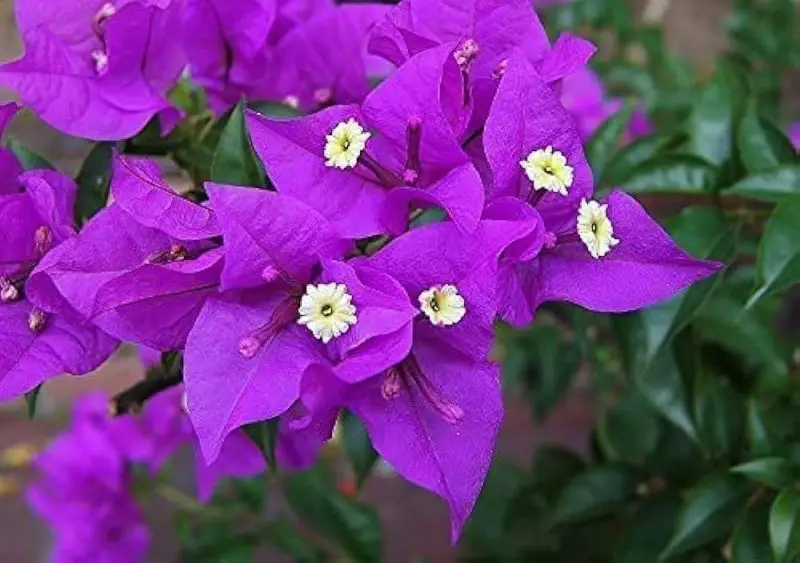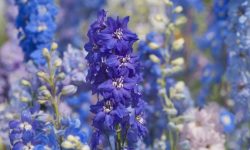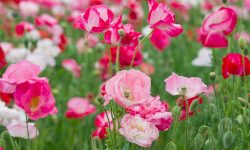Bougainvillea is known for its spectacular bursts of color that can transform any garden or balcony into a tropical paradise. However, many gardeners face a frustrating issue when their bougainvillea grows healthy green leaves but refuses to produce those stunning flowers. If you are wondering why your bougainvillea is not blooming, understanding the reasons behind this problem is essential. More importantly, knowing how to fix it quickly will help you enjoy its brilliant display of vibrant bracts in no time.
This detailed guide will explain the common causes that prevent bougainvillea from flowering and provide effective solutions to help you encourage healthy blooms.
Understanding Bougainvillea Flowering Habits

Bougainvillea is not a true flowering plant in the way many people think. Its bright colors come from modified leaves called bracts, which surround the plant’s small, white, and delicate flowers. These bracts only form under specific growing conditions, and the plant often prioritizes foliage growth when those conditions are not met.
Unlike other flowering plants, bougainvillea thrives on a bit of stress. A slight lack of nutrients, controlled watering, and exposure to full sun often trigger more abundant blooming. This unique characteristic means that if you care for your bougainvillea too gently, giving it constant water and rich soil, you may unintentionally encourage leafy growth instead of flowers.
Understanding this natural growth habit is the first step to solving the problem. Once you know what triggers flowering, you can make targeted adjustments to encourage the plant to produce the vibrant colors it is famous for.
The Importance of Sunlight for Bougainvillea Blooms
Bougainvillea and Full Sun Requirements
Bougainvillea is a sun-loving plant that needs at least six hours of direct sunlight daily to produce abundant blooms. In shaded or partially shaded areas, the plant will continue to grow lush foliage but will rarely produce colorful bracts. This is because the energy from sunlight drives the flowering process, and without enough light, the plant focuses on vegetative growth rather than reproduction.
If your bougainvillea is indoors or in a location that receives limited sunlight, it will struggle to bloom no matter how much fertilizer you apply. Even in regions with bright weather, placing the plant near walls, fences, or trees that block sunlight can significantly reduce flowering. Moving your bougainvillea to a sun-drenched spot often leads to noticeable improvement within a few weeks.
Signs of Sunlight Deficiency
A bougainvillea deprived of sunlight usually develops long, weak stems with sparse leaves. The leaves may appear dull green rather than vibrant, and no bracts will form. If you see these signs, increasing sunlight exposure should be your first step before making any other changes to its care routine.
Watering Issues That Prevent Flowering
How Overwatering Affects Bougainvillea Blooms
Bougainvillea prefers slightly dry conditions and does not respond well to constant watering. When the soil remains moist all the time, the plant directs its energy toward growing leaves and roots rather than producing flowers. Overwatering also risks root rot, which further weakens the plant and reduces its flowering potential.
A common mistake among gardeners is treating bougainvillea like other flowering plants that require frequent watering. In reality, bougainvillea thrives on neglect, and its roots perform best in dry, well-draining soil. Stress from limited water supply often encourages the plant to produce flowers as part of its survival mechanism.
Finding the Right Watering Schedule
The best approach is to water deeply but allow the soil to dry almost completely before watering again. During blooming season, reducing water slightly can encourage better flower production. If your bougainvillea is in a pot, make sure the container has drainage holes to prevent water accumulation, as trapped water can quickly lead to root problems.
Nutrient Imbalance and Its Impact on Bougainvillea Blooms
Why Too Much Fertilizer Can Be a Problem
Many gardeners believe that fertilizing more will encourage blooming, but bougainvillea reacts differently. Excessive nitrogen in fertilizer leads to rapid leaf growth at the expense of flowers. Nitrogen stimulates leafy development, while phosphorus and potassium are more critical for flower production.
If you have been feeding your bougainvillea with general-purpose fertilizers rich in nitrogen, this could be the main reason for its lack of blooms. You might see a bushy, lush plant with almost no colorful bracts, which is a clear sign of nutrient imbalance.
Choosing the Right Fertilizer
To encourage blooming, switch to a fertilizer with a lower nitrogen content and higher phosphorus and potassium levels. A balanced fertilizer labeled for flowering plants works well, and applying it during the growing and blooming season can significantly boost flower production. However, fertilize sparingly, as bougainvillea does not need heavy feeding. A slight nutrient deficiency often promotes better blooming than over-fertilization.
Pruning Mistakes That Reduce Flowering
How Incorrect Pruning Affects Bougainvillea
Bougainvillea flowers on new growth, which means improper pruning can delay or completely stop blooming. Cutting the plant back at the wrong time, especially just before the flowering season, removes the young branches where bracts would form.
Some gardeners either avoid pruning altogether or prune too aggressively, both of which can interfere with flowering. Without regular trimming, the plant becomes overly woody, reducing the number of fresh shoots. On the other hand, cutting too much foliage removes potential bloom sites.
Pruning at the Right Time
The best time to prune is after a blooming cycle ends. Lightly trimming the tips encourages the growth of new branches, which will later produce flowers. Shaping the plant also improves air circulation and sunlight exposure, both of which contribute to healthier flowering.
Temperature and Stress Factors That Influence Flowering
The Role of Temperature in Blooming
Bougainvillea thrives in warm temperatures and struggles to bloom in cold or fluctuating weather. If grown in regions with cool nights or during a cold season, flowering will slow down significantly. The plant prefers temperatures between 60°F and 100°F, and extreme cold can even cause leaf drop.
In tropical and subtropical climates, bougainvillea blooms almost year-round. However, in temperate zones, it may need extra care, including protection from frost and cold drafts. Moving potted bougainvillea indoors during winter can protect it, but you should place it near a bright window to ensure enough sunlight.
Using Stress to Trigger Blooms
Interestingly, bougainvillea flowers more profusely when subjected to slight stress. Controlled drought, reduced fertilization, and even limited space in a pot can encourage flowering. This is because the plant produces blooms as part of its natural survival response when it senses a harsh environment. Gardeners often take advantage of this by slightly reducing care routines before the blooming season.
Container Size and Root Restriction
Why Root Restriction Encourages Blooming
Bougainvillea blooms better when its roots are slightly restricted. If planted in a large container with plenty of space, the plant focuses on root expansion and leaf growth rather than flowering. In contrast, when grown in a smaller pot, the restricted root space sends a stress signal that encourages bloom production.
If your potted bougainvillea is not blooming, consider whether it has too much root space. Transferring it to a slightly smaller container or allowing it to remain root-bound can often stimulate more flowers. However, ensure the pot has good drainage to avoid waterlogging.
Recovering a Non-Blooming Bougainvillea Quickly
Once you identify the cause of your bougainvillea’s lack of blooms, adjusting its care routine can bring visible results within weeks. Move it to a sunny location, reduce watering, switch to a bloom-friendly fertilizer, and prune lightly to encourage new growth. If you grow it in a pot, consider restricting root space, and allow the plant to experience slight stress.
Consistency is key, as bougainvillea responds gradually to changes. Once the conditions are right, you will notice new growth tips forming, followed by clusters of colorful bracts that transform your garden into a tropical display.
FAQs About Bougainvillea Not Blooming
How long does it take for bougainvillea to bloom after making changes?
Depending on the plant’s health and growing conditions, you may start seeing blooms within four to six weeks after adjusting sunlight, watering, and fertilization.
Can I force bougainvillea to bloom indoors?
Yes, but only if it receives at least six hours of direct sunlight or strong grow lights. Indoor bougainvillea also benefits from slightly dry soil and reduced fertilization to mimic outdoor stress conditions.
Will cutting back my bougainvillea help it bloom faster?
Light pruning after a growth cycle encourages new shoots, which produce flowers. However, avoid heavy pruning right before the flowering season.
Conclusion
Bougainvillea’s stunning display of colorful bracts depends on specific growing conditions that encourage flowering rather than leaf growth. If your plant is not blooming, the issue often lies in too much shade, overwatering, excessive nitrogen, or improper pruning. By adjusting these factors, you can quickly restore its blooming potential.
A balance of bright sunlight, controlled watering, appropriate fertilization, and light stress will encourage your bougainvillea to produce the vibrant colors it is famous for. With patience and proper care, your plant will reward you with a spectacular floral display season after season.






